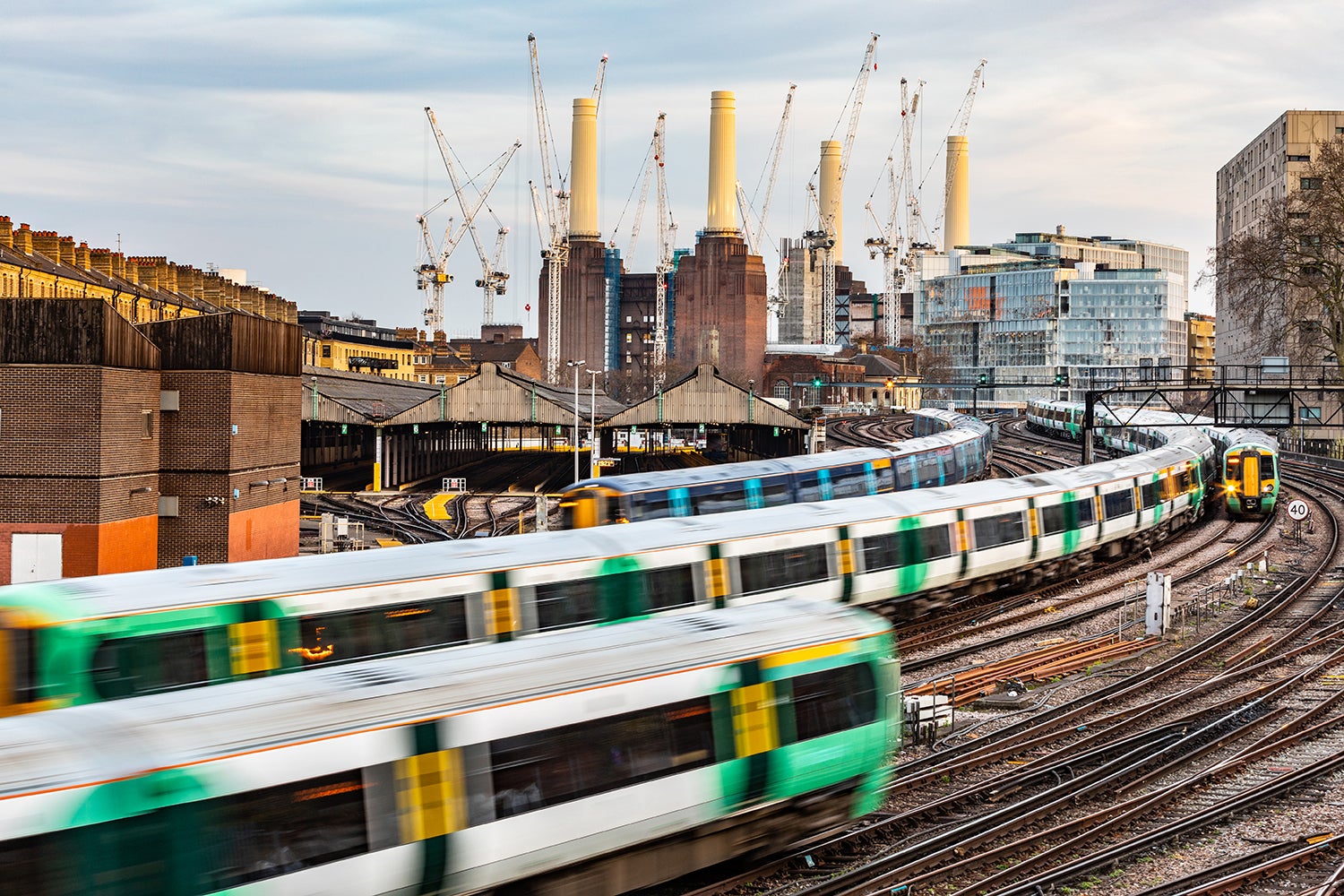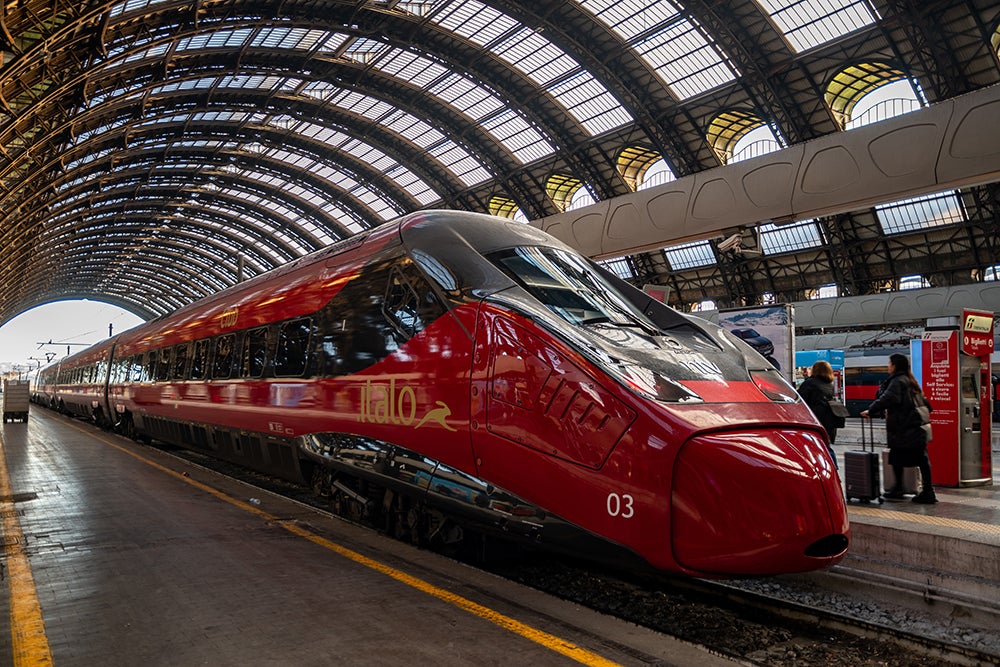
Following a difficult few years in which the Covid-19 pandemic put the brakes on rail – reducing global passenger numbers by an average of 70%, according to the International Union of Railways – the industry finally got back on track in 2022.
In key markets such as the UK, ridership reached as high as 95% of pre-Covid-19 levels, according to the Department for Transport (DfT).

Discover B2B Marketing That Performs
Combine business intelligence and editorial excellence to reach engaged professionals across 36 leading media platforms.
However, with issues such as staff shortages and sustainability goals looming, the next year won’t be without its challenges. With that in mind, Railway Technology asked a number of industry experts to share their thoughts on what awaits the rail sector in 2023.
Sustainability targets
Last year, the International Energy Agency (IEA) warned that the pandemic had slowed progress towards a sustainable future. Supply chain disruptions, the war in Ukraine and the economic downturn haven’t helped industries to maintain their green transition much either. However, 2023 could be the year rail – a sector that already leads the way in sustainable transport – gets back on track.
“In 2023, sustainability is set to become even more imperative as governments and businesses realise the true impact we are having on the climate and local environments,” Paul Medley, head of compliance and environmental at QTS Group, says.
“The direction of travel (decarbonisation and use of renewables) is widely acknowledged, but the majority do not yet understand how difficult this will be, so it’s great to see Network Rail and others setting objectives and targets for carbon reduction, biodiversity increase and climate resilience.”

US Tariffs are shifting - will you react or anticipate?
Don’t let policy changes catch you off guard. Stay proactive with real-time data and expert analysis.
By GlobalDataMuch of the industry’s sustainable progress has centred around electrification, but the development and deployment of hydrogen fuel-based trains continues to trudge along, and 2023 could be the year that this promise is delivered.
“Rail’s biggest impact though on CO2 emission reduction will be by way of modal shift.”
“If hydrogen is to be the story of the 2020s then we should expect to see exciting developments during 2023. Hydrogen is increasingly seen as a key to decarbonisation – both as a replacement for diesel in the context of rail, supported by projects to produce hydrogen using renewable energy sources – an area where projects are starting to become bankable,” Giles Clifford, rail infrastructure partner at Gowling WLG, explains.
However, greener railways matter little if they aren’t being used. With rail already the most energy-efficient means of motorised passenger transport, capitalising on its environmental benefits will require getting passengers off roads and onto rail, Clifford says.
“Rail’s biggest impact though on CO2 emission reduction will be by way of modal shift – moving people out of private ICE [internal combustion engine] road vehicles and onto public transport.”
Customer experience
A great modal shift will require significant improvements to the customer experience – according to independent watchdog Transport Focus, in the UK, less than half of passengers feel the railways deliver value for money.
“In 2023, there will be an accelerated pace on putting passengers back at the heart of rail. We need radical thinking to improve the customer experience and distil the right problems to solve,” Iain Griffin, co-founder of Seatfrog, says.
“With the added pressure of inflation on consumers and the need to get rail revenues back on track in 2023, rail companies should be looking for strategies to generate new revenue streams on top of ticket revenue. Upgrades, smart flexibility, baggage and other value-added services for passengers not only represent ways to increase their happiness and usage of rail, but also to drive high profit, new incremental revenue.”
“Rail companies should be looking for strategies to generate new revenue streams on top of ticket revenue.“
However, the focus won’t be solely on leisure travellers. Last year, even as ridership numbers recovered, the DfT reported business rail trips lagged behind at just 30% of pre-Covid-19 levels. As rail continues its recovery, this is likely to be an area of focus for many in the sector, according to Liz Emmott, director of global distribution & business solutions at Trainline Partner Solutions.
“We’ll see booking platforms focusing on ‘consumerising’ the business travel experience to capitalise on growing demand as corporate travel continues to bounce back in 2023. Business travellers expect the same personalised, seamless digital experience they receive when booking leisure travel – and they have every right to.”
Service alterations
Modern innovations and personalised experiences aside, what rail users want most is a place to sit on services that run when they actually need them to. With the pandemic having significantly altered available services and our use of them, needs often aren’t being met.
While Friday-Monday long-distance services and increasingly full, urban and commuter services are empty, Edward Morley, a rail expert for PA Consulting, points out. Mid-week, this flips, with urban trains too full: “The seven-day timetable of five and two no longer works.”
With passengers in the UK facing further price hikes of 5.9% in March, increased pressure from rail users is a given and service alterations will be a necessity.
“The seven-day timetable of five and two no longer works.”
“2023 will see increased challenge for customer groups, and greater recognition from the government of a need to alter this balance, with a more dynamic solution required, both in the timetable itself, and the configuration of trains that serve that timetable,” Morley says.
“The move to a dynamic timetable not yet enabled by a fully ‘digital railway’ will, nonetheless, begin, and with it a new movement of drivers between operators (enabled by the transition to a more government-controlled rail system through rail reform) to help that to happen.”
Industry collaboration
Central to continued growth in 2023 will be greater collaboration between rail operators and industry partners.
“Partnerships between operators and third-party ticket retailers have the ability to impact the whole value chain. While some carriers across the continent implicitly value the role specialist retailers can play in strengthening customer relationships, others have been more circumspect,” says Emmott,
“The technology now exists to overcome the historically fragmented data that challenges the rail sector, enabling it to take a more sophisticated and collaborative approach to serve the changing needs of customers. In 2023, a renewed focus on collaboration will be vital to driving growth.”
Competition – shown to lower prices, improve services, increase variety, boost investment and accelerate innovation – will also be vital.

“Competition between incumbents and new players in the market can improve services and prices for travellers,” states Emmott. “Take Italy as an example. A decade on from liberalising its rail market, Italo – the first private operator on Italy’s high-speed network – has grown from serving just nine destinations to serving 60 stations across more than 50 city locations nationwide.
“Healthy competition has created greater capacity and inspired new technology services for travellers. We hope to see more markets actively develop a marketplace that is primed for innovation and customer benefit.”
Increased investment
Following a challenging year in which the UK transport sector found itself led by no less than three transport secretaries, momentum has stalled. Yet, according to Nick Andrew, managing director of rail supply and maintenance firm CWE, “all won’t be lost if we’re able to hit the ground running in 2023”.
However, that will require clarity around major industry issues such as The Rail Network Enhancement Pipeline (RNEP), the DfT outline for rail works that require government funding — an annual publication that hasn’t been updated since 2019.
“We believe greater transparency of the pipeline of orders from public sector organisations is vital to enable growth as well as value creation for small and medium businesses,” Andrew insists. “It is also hoped 2023 will see additional clarity around major projects such as HS2’s timeline – but as we head into the new year, the UK Government has signalled it is searching for £50bn of extra savings.”
“People are increasingly understanding the cost of not investing.”
With much of the world facing an economic downturn, the cost of rail infrastructure projects will undoubtedly raise concerns. However, Will Reddaway, head of innovation at East West Railway Company, believes that the value of investment – or rather the cost of not investing – will be duly recognised in the year ahead.
“More and more the focus will move away from absolute cost, to the value for money of properly delivered regional connection. People are increasingly understanding the cost of not investing,” says Reddaway.
“For example, in Cambridge, where the economy is significantly constrained due to poor connectivity, the cost of not investing is that investment growth and top talent simply go elsewhere in the world and the local economy stagnates, limiting opportunity and prosperity for those already living and working in the area.”
Skills shortage
To keep the sector moving forward, operators will also need to address issues that affect their workforce. Particularly in places such as the UK, where long-running rail strikes throughout the winter have caused considerable disruption.
“The legacy of Covid-19 remains, from the Great Resignation to quiet quitting and current industrial action. For a long time, transport has focused on the infrastructure needed to provide transport services and recent months have highlighted the importance of the people operating and maintaining it,” predicts Sally Shellum, rail expert at PA Consulting.
“There will be a call for greater investment in people, both maintaining the engagement of those already servicing our transport sector and attracting new people, skills and ways of people into it.”
“The rail industry faces a major challenge when it comes to bridging the skills gap.”
With City and Guilds estimating that 28% of current rail employees are nearing retirement, the sector requires an additional 120,000 staff over the next five to ten years to fill the gap. Without action, staffing shortages could cause further disruption to services in 2023 and in the years ahead.
“The rail industry faces a major challenge when it comes to bridging the skills gap to enable it to deliver the infrastructure that is needed,” Andrew says. “As such, we believe that investing in the engineering talent of tomorrow is crucial to the success of every business that supports the rail industry – and to the future of the sector as a whole.”





